#Photon OS
Explore tagged Tumblr posts
Text
VMware Photon OS: Authentication token lock busy
Recently, we faced an issue when trying to reset the Orchestrator root password. Obviously, we followed the official way to reset it but somehow it wasn’t going well. Procedure to reset the root password In the vSphere Web Client, restart the guest operating system of the appliance. Click the console and wait for the Photon screen to appear. Press e to go to the GNU GRUB boot menu editor.…
0 notes
Text
hmm fried brain yes the only way to eat
im happy for my bed and im happy for my door and im happy for my window. my favorite room in the world so far is at my uncles on his farm in his shed he does not live in and has done up and there is a room i like a storage room t it is little and has small bunk bed and it gets very dark and you can not see and you are down a little bit and it is dark and it feels very good
sleept in a countable amount of rooms
1 2 3 4 5 6
7
8
9
10 11
12
13
23
24 25 26 27 28 29 30
31 32
33 34 35 36 37 38
39 40
41 42
43
44 45
50
round up to 50 because 22233 3 22 so yes it does make sense to do that. please wash you hands prostitutes please please please please please please please. 23232323
surely i am exaggerating
home
k
n nana
uncle
nan
uncle
nana
motels
hospitals
abanboned
camps
judy
c c
aunty
aunty
how on earth do i find the time
#simple words for a simple mimd#mimd#hacked the hive mind#correct opinio#honesty#ssri#helpful effectively#lists#decision#small spaces have recently become almost as feared as large ones again and i blame it om being watched#i do not have cancer! get me out of this room.. my nose is so wet and no one os coming and when they do it is to spray me with a hose!#comedy living#still not sleeping in my box#discontent#bumble bees#photon#banshee#dry patch#tape#turning blankets#tissue box bin
5 notes
·
View notes
Text


Funko Pop Comic Covers Marvel Captain Marvel Monica Rambeau - 03
Link para compra BR: https://amzn.to/46bmi7e
Buy here: https://amzn.to/40p0KCJ
#funko pop#action figure#comics#marvel#comic covers#captain marvel#capita marvel#marvel comics group#the avengers#os vingadores#photon#monica rambeau
1 note
·
View note
Text
VMware Cloud Foundation 9.0 Yenilikleri: Photon OS v5, Güçlü Güvenlik ve Daha Fazlası
Merhaba, bu yazımda szilere VMware Cloud Foundation 9.0 özelliklerinden bahsedeceğim. VMware Cloud Foundation (VCF) 9.0 sürümü nihayet yayımlandı! Bu güncelleme; altyapı yönetiminden güvenliğe, otomasyondan performansa kadar sayısız geliştirme getiriyor. Aşağıda, dikkat çeken yenilikleri tüm ayrıntılarıyla bulabilirsiniz. Genişletilmiş Bileşen Uyumluluğu ve Güncellenmiş BOM VCF 9.0, yerleşik…
#download vmware cloud foundation#vmware cloud foundation 4 advanced#vmware cloud foundation 9.0#vmware cloud foundation blog#vmware cloud foundation editions#vmware cloud foundation version
0 notes
Text
Diamond Qubits do MIT redefinem o futuro da computação quântica
Pesquisadores desenvolveram um processo de fabricação modular para produzir um sistema quântico em um chip que integra uma matriz de qubits de átomos artificiais em um chip semicondutor. Crédito: Sampson Wilcox e Linsen Li, RLE, editado Um novo sistema quântico no chip permite o controle eficiente de uma grande variedade de qubits, avançando em direção à prática Computação quântica Realização de computação usando fenômenos da mecânica quântica, como superposição e emaranhamento. Pesquisadores em MIT e a MITRE desenvolveram uma plataforma de hardware quântica modular e escalável, incorporando milhares de qubits em um único chip, prometendo controle e escalabilidade aprimorados. Utilizando centros de cores de diamante, esta nova arquitetura suporta extensas redes de comunicação quântica e introduz um processo inovador de fabricação de bloqueio e liberação para integrar eficientemente esses qubits com tecnologias de semicondutores existentes. Potencial da Computação Quântica Imagine ser capaz de resolver rapidamente problemas extremamente complexos que podem levar décadas para serem resolvidos pelo supercomputador mais poderoso do mundo. Essa é a promessa dos computadores quânticos. No entanto, concretizar essa capacidade requer a construção de um sistema com milhões de blocos de construção interconectados chamados qubits. Criar e controlar tantos qubits em uma arquitetura de hardware é um enorme desafio que cientistas de todo o mundo estão se esforçando para enfrentar. Avanços em Hardware Quântico Para atingir esse objetivo, pesquisadores do MIT e do MITRE demonstraram uma plataforma de hardware modular e escalável que integra milhares de qubits interconectados em um circuito integrado personalizado. Essa arquitetura de “sistema quântico em chip” (QSoC) permite que os pesquisadores ajustem e controlem precisamente uma densa matriz de qubits. Vários chips podem ser conectados usando redes ópticas para criar uma rede de comunicação quântica em larga escala. Ao ajustar qubits em 11 canais de frequência, essa arquitetura QSoC permite um novo protocolo proposto de “multiplexação de emaranhamento” para computação quântica em larga escala. Fabricação inovadora de chips quânticos A equipe passou anos aperfeiçoando um processo intrincado para fabricar matrizes bidimensionais de microchiplets qubit do tamanho de átomos e transferindo milhares deles para um chip semicondutor de óxido metálico complementar (CMOS) cuidadosamente preparado. Essa transferência pode ser realizada em uma única etapa. “Precisaremos de um grande número de qubits e de um grande controle sobre eles para realmente alavancar o poder de um sistema quântico e torná-lo útil. Estamos propondo uma arquitetura totalmente nova e uma tecnologia de fabricação que pode suportar os requisitos de escalabilidade de um sistema de hardware para um computador quântico”, diz Linsen Li, um estudante de pós-graduação em engenharia elétrica e ciência da computação (EECS) e autor principal de um artigo sobre essa arquitetura. Os coautores de Li incluem Ruonan Han, professor associado do EECS, líder do Terahertz Integrated Electronics Group e membro do Research Laboratory of Electronics (RLE); autor sênior Dirk Englund, professor do EECS, pesquisador principal do Quantum Photonics and Artificial Intelligence Group e do RLE; assim como outros no MIT, Cornell University, Delft Institute of Technology, US Army Research Laboratory e MITRE Corporation. O artigo foi publicado recentemente na Nature . Propriedades únicas dos centros de cores de diamante Embora existam muitos tipos de qubits, os pesquisadores escolheram usar centros de cores de diamante por causa de suas vantagens de escalabilidade. Eles usaram esses qubits anteriormente para produzir chips quânticos integrados com circuitos fotônicos. Qubits feitos de centros de cor de diamante são “átomos artificiais” que carregam informações quânticas. Como os centros de cor de diamante são sistemas de estado sólido, a fabricação de qubits é compatível com os processos modernos de fabricação de semicondutores.
Eles também são compactos e têm tempos de coerência relativamente longos, que se referem à quantidade de tempo em que o estado de um qubit permanece estável, devido ao ambiente limpo fornecido pelo material de diamante. Além disso, os centros de cores de diamante têm interfaces fotônicas que permitem que eles sejam emaranhados ou conectados remotamente com outros qubits que não sejam adjacentes a eles. “A suposição convencional no campo é que a não homogeneidade do centro de cor do diamante é uma desvantagem em comparação com a memória quântica idêntica, como íons e átomos neutros. No entanto, transformamos esse desafio em uma vantagem ao abraçar a diversidade dos átomos artificiais: cada átomo tem sua própria frequência espectral. Isso nos permite comunicar com átomos individuais por meio do ajuste de voltagem em ressonância com um laser, muito parecido com o ajuste do dial em um pequeno rádio”, diz Englund. Desafios de comunicação e controle quânticos Isto é especialmente difícil porque os pesquisadores devem conseguir isso em grande escala para compensar a falta de homogeneidade do qubit em um sistema grande. Para se comunicarem entre qubits, eles precisam ter múltiplos desses “rádios quânticos” discados no mesmo canal. Alcançar essa condição se torna quase certo ao escalar para milhares de qubits. Para esse fim, os pesquisadores superaram esse desafio integrando uma grande variedade de qubits de centro de cor de diamante em um chip CMOS que fornece os mostradores de controle. O chip pode ser incorporado com lógica digital integrada que reconfigura as tensões de forma rápida e automática, permitindo que os qubits atinjam a conectividade total. “Isso compensa a natureza não homogênea do sistema. Com a plataforma CMOS, podemos ajustar de forma rápida e dinâmica todas as frequências qubit”, explica Li. Fabricação de bloqueio e liberação Para construir este QSoC, os pesquisadores desenvolveram um processo de fabricação para transferir “microchiplets” do centro de cor do diamante para um backplane CMOS em grande escala. Eles começaram fabricando uma série de microchiplets centrais de cor de diamante a partir de um bloco sólido de diamante. Eles também projetaram e fabricaram antenas ópticas que permitem uma coleta mais eficiente dos fótons emitidos por esses qubits de centro de cor no espaço livre. Em seguida, eles projetaram e mapearam o chip da fundição de semicondutores. Trabalhando na sala limpa do MIT.nano, eles pós-processaram um chip CMOS para adicionar soquetes em microescala que correspondam ao conjunto de microchiplet de diamante. Eles construíram uma configuração de transferência interna no laboratório e aplicaram um processo de trava e liberação para integrar as duas camadas travando os microchiplets de diamante nos soquetes do chip CMOS. Como os microchiplets de diamante são fracamente ligados à superfície do diamante, quando eles liberam o diamante em massa horizontalmente, os microchiplets permanecem nos soquetes. “Como podemos controlar a fabricação tanto do diamante quanto do chip CMOS, podemos fazer um padrão complementar. Dessa forma, podemos transferir milhares de chiplets de diamante para seus soquetes correspondentes, todos ao mesmo tempo”, diz Li. Os pesquisadores demonstraram uma transferência de área de 500 por 500 mícrons para uma matriz com 1.024 nanoantenas de diamante, mas eles poderiam usar matrizes de diamante maiores e um chip CMOS maior para ampliar ainda mais o sistema. Na verdade, eles descobriram que com mais qubits, ajustar as frequências requer menos voltagem para esta arquitetura. “Nesse caso, se você tiver mais qubits, nossa arquitetura funcionará ainda melhor”, diz Li. Perspectivas Futuras e Testes de Desempenho A equipe testou muitas nanoestruturas antes de determinar o conjunto de microchiplet ideal para o processo de bloqueio e liberação. No entanto, fabricar microchiplets quânticos não é uma tarefa fácil e o processo levou anos para ser aperfeiçoado. “Repetimos e desenvolvemos
a receita para fabricar essas nanoestruturas de diamante na sala limpa do MIT, mas é um processo muito complicado. Foram necessárias 19 etapas de nanofabricação para obter os microchiplets quânticos de diamante, e as etapas não foram simples”, acrescenta. Juntamente com o QSoC, os investigadores desenvolveram uma abordagem para caracterizar o sistema e medir o seu desempenho em larga escala. Para fazer isso, eles construíram uma configuração de metrologia crio-óptica personalizada. Usando essa técnica, eles demonstraram um chip inteiro com mais de 4.000 qubits que poderia ser sintonizado na mesma frequência, mantendo seu spin e propriedades ópticas. Eles também construíram uma simulação de gêmeo digital que conecta o experimento à modelagem digitalizada, o que os ajuda a compreender as causas básicas do fenômeno observado e a determinar como implementar a arquitetura com eficiência. No futuro, os pesquisadores poderiam aumentar o desempenho de seu sistema refinando os materiais que eles usaram para fazer qubits ou desenvolvendo processos de controle mais precisos. Eles também poderiam aplicar essa arquitetura a outros sistemas quânticos de estado sólido. Referência: “Integração heterogênea de interfaces spin–fóton com uma plataforma CMOS” por Linsen Li, Lorenzo De Santis, Isaac BW Harris, Kevin C. Chen, Yihuai Gao, Ian Christen, Hyeongrak Choi, Matthew Trusheim, Yixuan Song, Carlos Errando-Herranz, Jiahui Du, Yong Hu, Genevieve Clark, Mohamed I. Ibrahim, Gerald Gilbert, Ruonan Han e Dirk Englund, 29 de maio de 2024, Nature . DOI: 10.1038/s41586-024-07371-7 Este trabalho foi apoiado pelo Programa Quantum Moonshot da MITRE Corporation, pela Fundação Nacional de Ciências dos EUA, pelo Escritório de Pesquisa do Exército dos EUA, pelo Centro de Redes Quânticas e pelo Programa de Pesquisa e Inovação Horizonte 2020 da União Europeia.
0 notes
Text
L’INVENTEUR DU DISPOSITIF ITERACARE Fondateur de la marque Deshang Explication de la manière dont la fréquence térahertz (THz) est émise par l’appareil en termes scientifiques : NATURE DE LA FRÉQUENCE TÉRAHERTZ : Les photons THz ont une énergie de l’ordre du milliélectronvolt (meV), ce qui les rend non ionisants et généralement sans danger pour les tissus biologiques. 1 – FONCTIONNEMENT ET ÉMISSIONS : Lorsque l’appareil est mis en marche, il expulse de l’air chaud transportant une fréquence THz. Cette combinaison de fréquences THz et d’air chaud pénètre dans le corps, réchauffant les cellules et les os. 2 – GÉNÉRATION DE […]
0 notes
Text
Revelação Científica: Photon, Partícula de Luz, Tem Limite Máximo de Massa Descoberto
Os mistérios do universo expandem-se com uma descoberta fundamental: cientistas determinaram um novo limite máximo para a massa do fóton, a partícula de luz. A partir de observações de estrelas pulsantes na Via Láctea e sinais de rádio misteriosos de outras galáxias, uma equipe internacional de astrônomos concluiu que um fóton não pode pesar mais do que 9,52 × 10-46…

View On WordPress
0 notes
Link
Os preços das placas gráficas Arc A770 e Arc A750 da Intel continuam caindo e se tornando mais competitivos em relação às GPUs NVIDIA e AMD recentes. As placas gráficas Intel Arc A770 e Arc A750 oferecem valor competitivo contra as GPUs mais recentes da NVIDIA e AMD Começando com o principal destaque deste post, temos o GUNNIR Intel Arc A770 Photon OC White que vem com um frame buffer de 16 GB e é um dos poucos a apresentar tais capacidades de memória uma vez que a referência da Intel Limited Edition foi descontinuada. Isso deixa unicamente duas opções de A770 16 GB, 1 da GUNNIR e outra da ACER. A Sparkle nos disse que eles também oferecerão uma versão de 16 GB do Arc A770 quando sua novidade risco for lançada nas prateleiras do varejo. O preço mais grave do Intel Arc A770 16 GB foi anteriormente de US$ 339, mas a GUNNIR está oferecendo ainda mais descontos com o MSRP chinês para o cartão agora caindo para unicamente 2.299 RMB ou US$ 318. O mesmo cartão foi lançado por 3.199 RMB no ano pretérito, o que significa que estamos vendo uma queda de -28%, o que é muito grande. Isso mais uma vez torna a A770 16 GB a placa gráfica de 16 GB mais alcançável do mercado. Mas isso não é tudo, a placa de vídeo Intel Arc A770 de 8 GB também recebe uma boa promoção com a versão ASRock Phantom Gaming agora com preço de US$ 289, que é mais barata que a GPU NVIDIA GeForce RTX 4060. O Arc A770 tem sido muito competitivo com o RTX 4060 em nossa estudo recente e essas novas quedas de preço simplesmente o tornam um grande valor para os jogadores convencionais. O Arc A750 da ASRock na versão Challenger também recebeu um preço promocional reduzido para US$ 229, o que o torna mais barato que o Radeon RX 7600. Na China, você pode até encontrar a placa de vídeo GUNNIR Arc A770 Photon FLUX 8 GB por unicamente US$ 270, que é o mesmo preço sugerido da GPU AMD Radeon RX 7600. O AMD Radeon RX 7600 teve uma queda de preço para US$ 249, mas você terá uma economia de US$ 20 se comprar o Arc A750 de 8 GB, que terá um desempenho muito semelhante. A Intel realmente conseguiu fazer uma reviravolta completa com sua risco Arc, com o A770 e o A750 agora vistos uma vez que de grande valor, devido às recentes otimizações de driver e cortes de preços. Embora ainda existam alguns problemas com as placas no lado do driver, esperamos que a Intel os resolva rapidamente para que o Battlemage e as próximas iGPUs Xe-LPG para Meteor Lake possam ter um ecossistema de driver mais maduro em seu lançamento. Compartilhe esta história Facebook Twitter
0 notes
Text
Hola, he desarrollado un espacio de realidad virtual multijuador para Meta Quest con chat de voz, acceso a Internet, captura de escritorio, videos 360, objetos físicos, … ,usando Unity & Photon. Qué os parece? https://youtu.be/TsuYbi8ATVA
1 note
·
View note
Text
I'm not knowlagable enough on particle physics to discuss photonic computing. The gist i'm getting is like if your entire PC processed everything using optical connections, instead of electrical signals.
Again, I might be off about that, do your own reading, and make your own judgements.
However, lets talk about these claims with multiple decades of hindsight.
Because we're all old now.
10 Gigahertz
Simply phenomenal. However, by 2005 the highest speeds you'd expect to see in consumer hardware would be around 2-3 Ghz, and for the next 10-20 years as high as 3-5 base clocks, not factoring per core speeds, which wasn't a concept back in 95 (as far as I know). 10 Ghz for consumer PCs wouldn't be possible without it being permanently on LN2 (liquid nitrogen), and even then I don't think that would be enough. Let alone the power requirements would probably be through the roof... if you tried to harness lightning, which would come close... actually that would honestly be too much.
A Gigabyte of Memory
Not even ten years, by 9 years our computer had a GB of memory, and we even doubled it soon after. But it's crazy to think how much RAM sizes had exploded in 10 years. We went from going 64 MB was pretty good for windows 95, possibly even overkill, and then we multiplied that by 15.5 just about... then again 10 years earlier, one of the most popular microcomputers had 64 KB of RAM. Considering I have 64 GB of RAM in my own PC now, it sorta tracks.
100 Gigabytes of Storage
Aw yep. our PC in 2004 came with 120 GB of storage. Certainly an upgrade from our previous desktop's 1.5 GB. 20 years later, 100 GB would be criminally small, as games, apps, and the OS itself became bloated and unoptimized, because AAA games don't bother spending the time and money running compression or conserving data sizes. I'm still quite salty that the 4k upscaled cutscenes that come with the remaster of Command & Conquer and Red Alert from switching between 2 CDs each, to 32 GB. I'm doing my very best to stave off a conniption thinking about it. Warframe takes up 50 GB, but that is because it actually has that amount of content in it. So the takeaway is 100 GB has gone from something special to being not even enough to hold Call of Duty.
Weighing 4 ounces
If you're me that's about 100 grams, or a serving of bolognese before pasta (unless you're really hungry tonight). In 2005, I don't think I could concieve of a PC that has those requirements, and weighs that much. My PC does not weight 100 grams. In fact the GPU is heavy enough that when I transport my PC, I usually transport it and the GPU seperatly, because I don't want the PCI-E slot snapping off in transit. However... if you want a PC that meets the previous requirements (sans 10 GHz)... the Raspberry Pi 4 (model B) which came out about 5 years ago...
has a quad core ARM CPU at 1.8 GHz
Can have 1 GB of memory, but can also go up to 8 GB
has a micro SD card slot, which you can probably fit a 100 GB card in there
All that... and it's about 2 ounces.
Weeks of battery time
And we're back to the extrodanary. The most that Apple is claiming for their latest Macbook Pro is 22 hours. Most Laptops will lose their charge within the day guaranteed. I doubt it was any better in 2005. But let's focus on our design requirements for a 4 ounce tops PC that can (not) do 10 Ghz (because that's crazy, so 2 GHz at least), has 1 GB of memory at least, and 100 GB of storage at least.
Well... it seems like we've conveniently forgot to mention the modern smartphone. The Pocket PC of today!
Well a problem with that is that, while they meet and surpass the requirements for speed memory and storage, a lot of the good ones are actually heavier than 4 ounces, and they certainly don't have weeks of battery life. So, you could add a battery to the Pi, but that's extra weight, and I don't think 2 ounces of battery power is going to add charge in the multitude of weeks, when even the most hideously expensive flagship phones can barely crack a day... and this is taking use cases into account. Your phone may last longer on charge if it's doing not a one thing, but that's not the point.
And especially bad if it's trying to drive...
A Crisp 10,000 x 10,000 resolution display
So... how big is this 4 ounce device? because if it's REALLY small, then it's 10k display just about meets the definition of diminishing returns, as is any phone that has a 4k screen meets the definition of diminishing returns. My iPhone 12 mini has 2340‑by‑1080-pixel resolution at 476 ppi. It was designed to meet the reqirements that it the pixels are just small enough to not be visible by the naked eye. Most phones are like this these days. Here, this site is pretty interesting when it comes to that stort of thing.
But that's besides the point.
10k resolution is absurd for a 4 ounce device to handle (unless it actually has 10 Ghz of processing power). Our next resolution milestone 16k had just been shown off for the first time only last year. Hell, 8k is now at the point 4k was when it started hitting the mainstream.
And then it occurred to me.
All of this, it all has to be at least these specs or better. It has 10 Ghz of processing power, possibly a RISC based processor. It's super light, so you can take it with you, even wear it. It has exceptional battery life so you can sustain usage for long periods of time. And it has a extremely high resolution display.
This all sounds like the perfect, not as a dream PC of the future... but as a dream VR headset of the future. And at 4 ounces and weeks of battery life it would be comfortable to wear for extended periods of time, possibly days of use, resting and waking in VR. And with 10 Ghz at your disposal, you wouldn't be teathered to a PC. In fact with all that processing power not only to process visuals to a crisp 10k display, but to process...
YOUR BRAINSS... DOING THINGS... uh, ye.
So... are you ready to strap the multi Kilowatt VR headset on? Now with liquid oxygen cooling!
What are they saying with that, while I was 5 years old?
While we wouldn't stop getting Packard Bells to play with until 1997 where we got our first PC for christmas. For the word and card game boxes, I guess it's fun to throw numbers around. think about
I mean 10 Ghz for anything PC related is pretty funny to think about at the time of writing. On the other hand we got Bill Gates' alleged quote about 640k of memory from 1981 or something. Looks like 64 really took off as a number. It's in my OS, it's in my RAM, it's in the amount of drive space I have left because games are too big.
So either surpass expectation or you kinda stick around the same area but improve it in different ways, like how CPU speeds are sorta the same Ghz wise, but just have more cores. You tell that to 90s PC mag guy and he's like 'you put 8 pentiums in there for real?' and you tell them 'no I use AMD'.
Here's to another decade of computing... but not until 2025, please hold your uh... whatever you would call that until then.
Hey now, here's hoping virtual reality actually breaks out of it's niche, trapped in enthusiast hardware, and underpowered machines owned by terrible people... I mean that the people who produce it are terrible, not the owners... unless.
Actualy, there's your answer, Damo. Where is VR going to be in 10 years (as of 2015)? it's not... unless something happenes in the next year, otherwise mostly nothing (except boneworks, and HLVRAI)
Okay, wrapping up for real. Thank you for reading too much of this.

PC Mag - August 1995
618 notes
·
View notes
Photo



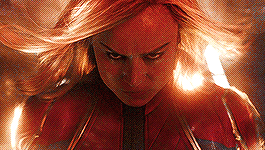
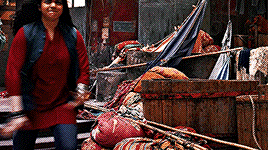
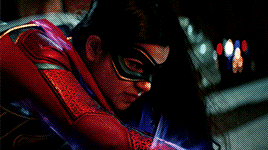
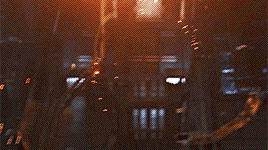
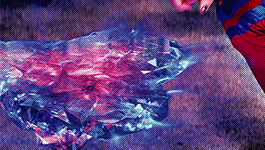
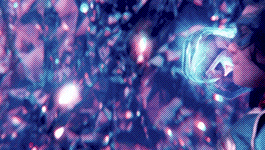
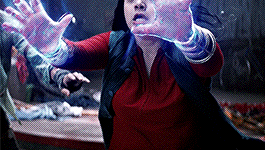
💥 ˋ°•*⁀➷ 𝐀𝐍𝐍𝐄 𝐌𝐀𝐑𝐈𝐄 𝐃'𝐎𝐑𝐋𝐄𝐀𝐍𝐒 𝐏𝐎𝐖𝐄𝐑𝐒 💥🟣
RÁPIDA INTRODUÇÃO:
Os poderes de Anne Marie são bem abrangentes, com uma gama de variações e vertentes. No entanto, devido a falta de estudos e dedicação, ausência de força e pouca idade, Anne consegue controlar apenas uma parcela. A jovem é bem ciente de seu potencial, no entanto nunca teve muito interesse em desenvolver além do que já conseguiu, porque poderes não são sua praia, tampouco magia, o que costuma usar apenas para fazer suas queridas velas. Tem sérias desconfianças também de que seu corpo seja capaz de suportar tudo, por isso prefere nem tentar. No momento, já se encontra mais do que satisfeita com o que tem e consegue controlar. Porém, após a lua de sangue, Anne sentiu sua capacidade aumentar, o que a tornou ligeiramente mais curiosa sobre os limites de seu poder, ainda que cautelosa.
DEFINIÇÃO:
MANIPULAÇÃO DE ENERGIA: Não existe uma definição exata para energia, mas os dicionários a mencionam como capacidade de produção de ação e/ou movimento, sendo uma grandeza física que se conserva, existindo também diversas formas de energia que podem se transformar em outros tipos. O usuário de manipulação de energia é capaz de manipular, absorver, moldar e transformar todos os tipos de energia existente.
MAIS INFORMAÇÕES ABAIXO:
O QUE ANNE MARIE PODE FAZER?
Anne Marie consegue controlar principalmente photon energy, a energia do fóton, que pode se converter em energia fotovoltaica e é proveniente dos fótons que são originados no centro do sol. Os fótons nascem em uma fusão nuclear, quando núcleos de hidrogênio se chocam para formar hélio. Como subproduto dessa reação, uma enorme quantidade de energia é liberada na forma de fótons, os quais Anne Marie naturalmente consegue controlar. Foi a primeira coisa que conseguiu fazer após receber sua habilidade da Excalibur. Como resultado, Anne Marie consegue acumular isso em seu corpo para disparar quando necessário, conseguindo fazer isso através das mãos e olhos, havendo a possibilidade de tal energia escapar por seus poros também. A intensidade e quantidade de fótons faz com que essas rajadas brilhem, assim como suas mãos e olhos quando está a utilizar o poder. Seu corpo todo pode reluzir também, o que não costuma acontecer. São rajadas quentes, poderosas e letais, carregando a energia, calor e radiação do sol. Além disso, Anne Marie também é capaz de solidificar essa energia, moldando e transformando como desejar. Inspiração nos poderes da Capitã Marvel e Miss Marvel.
Não faz parte de sua gama de poderes, mas Anne Marie é uma pessoa ágil e esguia por conta da prática constante de esportes, de forma que tem facilidade para escalar, pular e correr sem se cansar imediatamente, além de ser bastante flexível.
NÍVEIS:
Não existem níveis para tal poder. Não é como uma escada, mas sim como uma área plana com diversas direções, tudo dependendo de para qual direção Anne Marie decidir seguir e se aperfeiçoar. Ou com a qual ela descobrir mais afinidade, escolhendo uma vertente para estudar e se dedicar. Assim Anne pode escalar dentro daquela sub-habilidade, como a manipulação de energia elétrica, vital, cósmica, nuclear, cinética ou térmica, entre outras. Dentro de tais sub-habilidades, há outras coisas que pode aprender a fazer, tudo com o esforço e tempo necessário caso ela queira.
LIMITAÇÕES E FRAQUEZAS:
Habilidades mentais e corporais: essas habilidades podem facilmente controlar Anne Marie. Sendo sua principal habilidade algo mais ofensivo do que defensivo, a jovem não tem proteção alguma contra poderes de controle de mente e corpo.
Luta: embora às vezes tente, Anne Marie não sabe lutar e qualquer chute ou soco é capaz de derrubá-la.
Chumbo: Anne Marie é terrivelmente alérgica a chumbo e isso consegue anular seus poderes e drenar sua própria energia. Se em contato com o material por algum tempo, pode até mesmo levar a morte. É absolutamente mortal para ela. É algo que ainda não sabe.
Preguiça, irresponsabilidade e falta de dedicação: a jovem D’orleans sabe muito bem da capacidade e potencial de sua habilidade, afinal seus pais ficaram maravilhados quando ela começou a demonstrar tal habilidade. Os livros possuíam muito a dizer e a gama de opções provindas da manipulação de energia pareciam infinitas, mas... Anne não se importa. Não deseja ser super poderosa. Na realidade, desde que ganhou tal presente da Excalibur, costuma se sentir mais cansada e sonolenta. Ela, que nunca havia gostado muito de estudar, começou a evitar com mais afinco. Está muito mais interessada no magibol, suas velas e trabalhos como modelo e influencer.
É incapaz de criar energia, de forma que consegue manipular e moldar apenas as que já existem e têm acesso.
Tudo depende também da capacidade de energia que é possível acumular em seu próprio corpo. Quanto mais forte, mais energia… Porém Anne Marie não possui uma constituição tão forte.
Quanto mais utiliza suas habilidades sem o treinamento propício e de forma despreocupada, mais de sua própria energia vai drenando também, o que é perigoso porque sem saber, está mexendo com sua energia vital. Ela não sabe disso.
O uso intenso por muito tempo pode ser extremamente cansativo, levando a horas, dias ou até mesmo semanas de sono profundo. Como Anne Marie costuma usar seus poderes de forma meio irresponsável, sem se preocupar ou estudar ou treinar como o indicado, acaba sempre dormindo muito depois, sem consciência de que é uma consequência de sua irresponsabilidade.
Sempre que usa sua habilidade, independente da quantidade, precisa descansar dormir por pelo menos vinte e quatro horas. Seu corpo fica extremamente cansado por conta da energia absorvida e manipulada.
LUA SE SANGUE: Anne Marie ainda não sabe qual a dádiva recebida, mas tem se sentido mais forte, o que a estimula a pesquisar ou treinar um pouco mais. Não é um grande passo, mas já é alguma coisa contra seu total desinteresse.
Obs: nenhum dos gifs acima são meus, os créditos vão aos seus criadores. Eu apenas redimensionei e editei.
#( extra. )#nossa gente eu tive que pesquisar FÍSICA pra escrever isso#foi triste#acho interessante porém sou de HUMANAS#kkkkkkk#decidi fazer algo assim por conta dos duelos por vir
20 notes
·
View notes
Text










Marvel Legends Series Avengers Captain Marvel vs Doctor Doom Hasbro F7086
Link para compra BR: -Indisponível-
Buy here: https://amzn.to/3zMVa0o
#marvel#marvel legends#hasbro#action figures#comics#the avengers#marvel avengers#os vingadores#Avengers 60th Anniversary#Avengers Beyond Earths Mightiest#capita marvel#captain marvel#photon#monica rambeau#doctor doom#doutor destino#The Marvels
0 notes
Text
Marvel Team-Up (2019) - Review

Marvel Team-Up de 2019 conta com seis edições que se dividem em duas historias, sendo as três primeiras escritas por Eve. l. Ewing (Iron Heart, Monica Rambeau: Photon) e as três últimas por Clint McElroy.
A primeira é protagonizada por Ms. Marvel e Homem-Aranha. Ao irem prestigiar uma cientista em ascenção, as coisas saem um pouco do controle quando um vilão ataca o local em busca da nova tecnologia de "troca de mentes" criada pela cientista. Não preciso nem dizer quais mentes foram trocadas, né?
Já a segunda história temos a Capitã Marvel e a Ms. Marvel como protagonistas e elas estão investigando alguns roubos de tecnologia Kree que está acontecendo em certos locais da cidade.
A primeira história é bem divertida, a gente tem os dois maiorais em humor e piadas geek protagonizando a HQ, então é cheio de referencias, piadinhas e trocadilhos. A história não é ruim, embora o final seja um pouco desapontante, mas esperado.
Já a segunda história é bem "ok". Não é nada incrível, não é tão divertida e nem cheia de ação. Tem seu valor, pois é uma leitura fácil e leve. O vilão dessa HQ é reaproveitado pela Kelly Thompson no Tie-In de Impéryo. Também achei a interação entre Kamala e Carol bem chatinha, não é sempre que temos um Team-UP entre a atual e antiga Ms. Marvel.
São seis edições, duas histórias, texto rápido e leve, então eu super recomendo a leitura, pois não leva nem meia hora.
#Marvel#Marvel Team-UP#Kamala#Carol Danvers#Spider-Man#Review#Analise#Resenha#Gibi#Comics#Quadrinhos
5 notes
·
View notes
Text
WandaVision speculation: post episode 5
@flavoracle has been posting some interesting theories and discussions about WandaVision that I’ve responded too, so now that ep 5 is out I thought I’d discuss what it means for his theories and some thoughts of my own. I’m going to separate this into two parts, with anything involving my knowledge of the comics under the read more. Some of it ight end up being spoilers and it’s generally a but more “inside baseball” than some MCU fans might be interested.
So first here’s my thoughts on where some of flavoracle’s theories stand:
“I believe that S.W.O.R.D. had possession of Vision’s body after the events of Infinity War, and for five years they were using it and studying it to try and create more sentient weapons. And when Wanda came back and found out, she was PISSED.So Wanda breaks into S.W.O.R.D. and breaks Vision’s body out, using her powers to do so undetected.“
This was basically confirmed this week. We see Wanda broke into SWORD and took Vision’s corpse. We don’t know for sure what SWORD was doing with it and Wanda wasn’t angry, per se, but SWORD director Hayward is clearly hiding something. His attempts to belittle and ultimately assassinate Wanda are borderline unhinged, and there’s a clear difference in perspective between him and the rest of the task force.
One of the biggest questions asked by this episode is how cognizant Wanda is of her control over Westvew. The answer seems to be that she consciously knows exactly what she is doing. What’s more, Vision, Agnes, and the twins are now aware of it too. However, it’s still kind of ambiguous how long Wanda has been conscious of this, and the details of how this started are still under wraps. So it’s possible Wanda discovered something with SWORD we haven’t seen yet and she doesn’t remember.
On the topic of Wanda’s memories, one of the most interesting scenes in the episode was Agnes asking Wanda is she wanted to do “another take.” Agnes seems to be aware of Wanda’s ability to “edit” reality, something Wanda herself still doesn’t seem to understand. it’s possible that some outside force is really editing the show but it seems like Wanda is erasing her own memory every time she does it. We also see some other limits to Wanda’s control, namely that Vision and the twins are truly able to operate independently.
The other big theory flavoracle put forward is pretty bold: “I predict that the aerospace engineer will be Reed Richards, and we’re going to see that engineer, Monica, Darcy, and Agent Wu become the MCU version of the Fantastic Four. I think the reason why Monica’s scans came back blank are because she’s already experiencing mild effects of her powers as the new Invisible Woman.”
I love this theory though I don’t think it will pan out, for a couple of reasons. I’m going to list some reasons in terms of MCU stuff and in the comics section I think I can disprove it. I will say I’m almost certain the aerospace engineer is Reed Richards. I can’t think of another person it could be and the fact that they don’t give a name means its someone important. (Sidenote: no further details on the missing person this episode, but I still think this is the most underrated mystery on the show.) However, I do not think we’ll be getting much more than a a name drop for Reed. I expect it to be something like Dr. Strange’s mention in CA:TWS. My logic for this is that WandaVision is already doing so much to set up stuff for the Young Avengers, Doctor Strange, Spider-Man, and X-Men in the MCU for them to try and fit in Fantastic Four stuff. So far Marvel has played the Fantastic Four’s involvement in the MCU pretty close to the vest and I think they’re going to keep doing that. The X-men stuff is a LOT to drop on us as it is and Marvel’s generally been pretty good about not cramming to many setups into each project.
On the topic of X-men stuff, let’s talk about that “recasting.” The way I see it there’s two ways to take it: either the Evan Peters version of Pietro is literally the incarnation of the character from the Fox X-men movies, and that those stories are all now canon in the MCU, or this is a fun reference and this is just a new recreation of Pietro to fit Wanda’s fracturing reality. I could really see it going both ways. I’m hesitant to think Marvel wants to canonize all of the X-men films, as there’s a lot of baggage there. The series ended on kind of a wimper, they had to retcon their own timeline, Bryan Singer controversies, etc. I currently think that we’ll get some sort of multiverse explanation (setting up stuff for Doctor Strange and Spider-Man) but not too much. Perhaps this version of Pietro will be based on an “echo” from across the Multiverse or something.
Comic Stuff:

The best argument against Monica and Jimmy Woo being the new Fantastic Four is that they’re both already preexisting comic characters Marvel likely has different plans for. Monica Rambeau is a superhero with light-based powers. That’s why her scan came out weird: she’s literally made of solid light. Throughout her comic career she’s been known as Photon, Spectrum, and Captain Marvel. She’s been on several superhero teams like the Avengers (she was even the team leader at one point) and the Ultimates. However, what I’m most interested in was her time as leader of the most gloriously weird team in all of comics, Nextwave.

Jimmy Woo is a SHIELD agent who led his own team called Agents of Atlas. The current incarnation of Agents of Atlas has an all Asian-American roster, so I doubt that’s going to be what they call the theoretical Woo-Darcy spinoff. However, the upcoming Shang Chi movie would be the first step to setting up an Agents of Atlas show or movie.
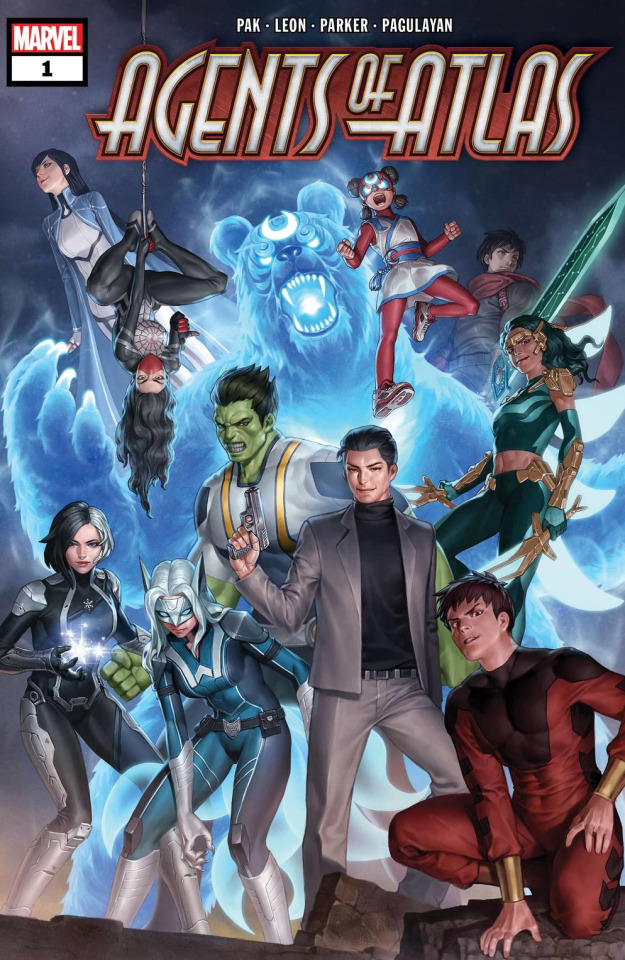
I fully expect both Monica and Jimmy Woo to show up in future MCU projects, os that’s why I really doubt they’re the new Fantastic Four. If Monica is going to be the new Invisible Woman, why give her the name of another superhero? I fully expect Monica to turn up in Captain Marvel 2 and possibly anything featuring the Avengers. I will say that between Monica’s presence and the comedic combination of Darcy and Woo it’s not entirely impossible all three are headed ot a Nextwave show, though I really doubt Disney is willing to let the mainstream MCU go quite that weird yet. However, the fact that the cards are even on the table is mind-blowing.
I’ll also add in this section that it looks pretty likely we’re going to see a “reverse House of M” scenario. Some people have been theorizing that the presence of mutants in the MCU will be explained by Wanda creating them here, in a twist on the ending of House of M where she got rid of all the mutants. Given Wanda’s characterization on the show matching House of M and the “recast” this looks pretty likely.
Another thing I’m surprised more people aren’t talking about: Tommy and Billy’s ability to “age” themselves was one of the freakiest things in episode 5, and given what we know about Billy in the comics opens up some interesting implications. Assuming the twins work the same way they did in the comics Billy inherits the same powers Wanda has, so he has as much control over Westview as she does. Presumably the “aging up” is actually just Billy’s power manifesting, and Tommy is just along for the ride. Also: given how much the Fox version of Quicksilver has in common with Tommy I’m very interested to see how those two get along.
Lastly, the name of the dog, “Sparky, comes form the 2016 Vision comic.

There’s a non-zero chance that if SWORD was working on recreating Vision, that might be getting Vision’s “family” from that comic.

It’s been rumored that some version of Vision will join the MCU Young Avengers. I’ve been assuming this will be the “Victor” incarnation from the original comic run but it would actually be really cool if they give us Viv Vision.

11 notes
·
View notes
Text
Genesis 1
In the beginning, we’re told, there was gods.
Yes, gods. Don’t like it? Take issue with the original: “אֱלהִים” wasn’t my idea. Stupid idea, if you ask me, pluralizing “אֱלוֹהַּ.” Did I ask the original writers of this book to do that? No. It was all their brilliant idea. Why did they think this was a good idea? I don’t know! Do I look like a necro-telepath to you?
Anyhow. In the beginning, there was gods. And gods went right ahead and created the ground and the space above the ground. Also there was a lot of water. And things were dark, because there wasn’t any light.
Also the spirit (or wind or breath or mind or…) of gods was hovering over the water, which I guess is to give us an idea of where they were in all this.
So we’ve got some ground, and some water, and some space, and a gods.
Then gods goes ahead and speaks light into existence. That’s right: they “hey, Siri”d light into existence, except without Siri because they’re gods and whatever they command just plain happens. Poof, light. Nothing emitting it. Nowhere for it to come from. But hey—there’s light. Completely and utterly sourceless. Don’t ask me how that works, because I have no idea. So far as I know it’s actually impossible. But here we are. Gods, right?
Next gods takes a look at the light and decides it’s all right. So they divide it from the darkness, which… apparently didn’t happen automatically. Strange, you’d think it would. How could light not be divided from darkness?
If you’ve got photons, you haven’t got an absence of photons. Got an absence of photons? Boy, do I have news for you: you haven’t got any photons!
But somehow light (the presence of photons) was indistinguishable from darkness (the absence of photons) until gods separated the two. How is this possible? I don’t know! This makes no sense whatsoever! Ahahaha! Gods, amiright?
Anyway.
Gods’s next move is to call the light “day” and the darkness “night.”
Oh, so we’re talking about some generalized light and darkness here, not “I lit a candle so now it’s day in my room” stuff… right? Right?
Note that there’s still no source for the light. “The sun is shining on this part of the planet, so it’s day here” is not a thing. Day is completely independent of the sun. The light fades out—evening—and fades back in—morning—and here we are, the first day. With no sun. Just light. Coming from… nowhere. Gods, man. They make no sense. Presumably there was a night in between that evening and morning somewhere, but who knows?
[cough]
So. Gods’s next move, on this first day of all days, is to create a firmament.
What the heck is a firmament.
“רָקִיעַ,” as it turns out, is an “extended surface.” So that’s what a firmament is: it’s a solid, flat, long and wide thing that’s useful as a base or a support. All right. Fine.
Where does gods put this firmament? Uh… in the water. Dividing it. So there’s some water below this firm, extended surface, and some water above it. And gods calls this thing “sky,” which is… interesting, because I’m pretty sure no airplanes or rockets or what-have-you have ever run into a firm, extended surface anywhere up there in the sky, and there’s no water outside the atmosphere, so—
No, no, don’t stone me.
If the Bible says the sky is a solid thing with water above it, well. Who am I to question the Bible, right? I’m sure there wouldn’t be any misinformation in here. The Bible is a great source of scientific knowledge, or so I’ve been repeatedly told.
Maybe there was an OS update later, or something. “Remove solid sky.” Who knows? Gods move in mysterious ways.
So. Speaking the sky into existence in the midst of the waters so as to put some water above it and some water below it takes up the whole of the first day! The completely sourceless light fades out, then back in again, starting up the second sunless day. Was there a night in there? Who knows! It’s not mentioned! You’d think we could assume, but—gods! Gods be weird, man. They might just be skipping it.
Second day, gods talks the water under the sky into bunching up into one spot so as to clear some dry land. You’d think this would result in a big pile of water towering over the land, but—gods! Maybe it was like that. Maybe it wasn’t. We don’t know.
Anyway, gods names the gathered-together water “sea” and the dry land “earth.”
Gods checks out what they’ve got so far, and decides it’s good.
This doesn’t take all day, by the way! They’ve still got time, so next they tell “earth” to sprout some plants: stuff that produces seeds and stuff that produces fruit that’s got seeds in it and stuff that produces fruit that is a seed. So… potatoes? Strawberries? Almond trees? Sunflowers? That kind of thing, I guess.
And earth sprouts the stuff. Pretty good considering gods never bothered to create any helpful microorganisms. Or a sun. And that they put all the water in existence either on the other side of the sky or in a big heap off to the side somewhere.
Gods, man. I know I keep saying it, but they defy reason, they really do.
So. They check it all out and go, “Yup, that’ll work.” And just in time, too, because the light fades out and back in again, and the third day starts.
Third day, gods figures it’s finally time for some sky decoration.
Why a sun is needed to shed light on the earth during the day when we’ve already had two perfectly well-lit days with no sun at all, gods only knows. The moon and stars make a little more sense, since light’s been completely excluded from the night—but wait, isn’t light day? And doesn’t sticking day into night kind of….
Well, never mind.
The point is, gods speaks a whole lot of lights into existence: a big one, a smaller one, and a lot of really little ones.
The idea is that these will really set the day and night apart from one another all fancy-like, and also they’ll be good for miraculous signs and omens and showing people what day or year or season it is. Super handy.
Now, don’t you get on my case about the sun and moon and stars being set up deliberately for use as signs from on high. This wasn’t my idea. “וְהָי֤וּ לְאֹתֹת֙,” gods says: “let them be for signs, omens, warnings, assurances.” I didn’t write this. Stop glaring at me like I invented the idea of the horoscope.
[sigh]
Well. So. Gods sets all these lights in the firmament. Yes, that’s right—in the firm stretched-out thing dividing the water under itself from the water above itself. Right inside it.
Don’t look at me like that. It’s not me that says this, it’s the Bible.
Incidentally, the sun and moon and stars are all the same type of thing: lights. Every one of them is a luminary—you know, an object that gives off light, a source of light.
Stop looking at me like that.
I’m not the one who says the moon is the same type of thing as the sun, only lesser. Anyway, who are you to say the moon doesn’t produce light? The Bible says it’s the same thing as the sun, just smaller and weaker! Who are you to question the Bible, huh?
So the sun and the moon and all the stars are inside the solid expanse of the sky, which has water above it. I don’t make the rules.
This little job takes all of the third day.
That’s right: commanding things into existence is time-consuming work.
The light fades, presumably taking the sun with it this time, then comes back again (probably bringing the sun with it this time, too), and here we are: the fourth day.
Gods commands the water to produce a whole bunch of living things. Does this include the water above the sky? That is up for debate! The Bible never says. Maybe there are fish above the sky. Maybe there aren’t. We don’t know, because we aren’t told. We could make guesses, or assume, but—gods, over here. Anything is possible.
Gods also commands there to be flying things, to fly above the earth, across the face of the sky.
So over the earth, under (but right up against) the firmament.
And that’s how everything in the sea and everything that flies got created. Right there and then. Fourth day. Gods checks it all out and yup, it’s good. But they’re not done there, oh no. They gotta endow all these creatures with the ability to reproduce. So they do that, and then they’re done, and the day is over.
Evening, morning, fifth day.
Would this be a good time to mention that traditionally, for the people who first believed this book, each new day starts at sunset? Sun sets, one day’s over, the next one’s started. So technically Wednesday night belongs to Thursday.
Yeah, not really important. Just a side note. Fifth day!
On the fifth day, gods tells the earth to sprout living creatures. Yeah, it’s the same word from when the earth sprouted plants. “יָצָא.” Once again, not my idea.
So the earth sprouts mammals and reptiles and bugs and all that.
Gotta emphasize here—this is gods making this stuff. Not the earth. Gods told the earth to do it and the earth did it, but that still counts as gods doing it. Okey-doke? Good. Glad we’re on the same page.
Gods inspects the lot and calls it good.
You ever notice what things gods inspects and what things they don’t? The ground and the space above it and the water—they never inspected that. Never checked it out and saw it was good. The darkness? Nope. Just assumed that one was all right, I guess. The firmament? Once again, free pass.
Anyway, creating every living creature on the land that doesn’t fly takes less time than creating a firmament, so gods goes on to another project.
“Let us make ‘Adam’ in our image, similar to us, and have it dominate all over living things and even the earth itself!”
Yeah, “אָדָם,” “aw-dawm, adam.” Just means “human,” basically. Or “man.”
Hey, “man,” “human,” what’s the difference?
So poof, there’s Adam, or Human, or Man—whatever you want to call it. Created in the image of gods, male and female.
...Okay, okay, I hear you! First we’ve got the plural “אֱלהִים” for one being, so I’m stuck saying “gods” when there’s a perfectly good singular “אֱלוֹהַּ” available, but I can’t use it and just say “god” because that’s not what the Bible says—and now we’ve got the singular “אָדָם” but it’s male and female so there must be two of it, right? Or is it intersex? Are “gods” a single being? Is “Adam” more than one person? Gaaaah!
The only thing to do is look at what the divinely inspired writer is actually saying.
Gods is plural. Adam is singular. Multiple gods created a single human, and that human was both male and female.
“But,” I hear you say, “this isn’t what I was taught in church!”
Well, I can’t help that, can I? It’s what the Bible says! It’s right there in divinely inspired black and white! “אֱלהִים” is plural! “הָֽאָדָם” is singular! This isn’t my idea! It clashes with what I was taught, too! But here it is! You want me to pretend these aren’t the words this divinely inspired writer used?
Thank you.
The gods endow this dual-sexed being with the ability to reproduce itself using basically the same words they used to bless the sea creatures and the flying things with that ability—“be fruitful and multiply”—which I guess means asexual reproduction was the original plan for humanity. Then again, who knows? These are gods. Maybe the plan was for Adam to split into two for the act, then recombine. Or some other weird thing that I can’t even think of. They’re, you know… gods. Anything is possible.
Incidentally, Adam is another thing that gets a free pass on the inspection deal! The gods don’t bother to check and see if Adam’s any good, nope. They just charge right on ahead into setting up what Adam’s going to eat (seeds and fruit, in case you were wondering), and what the other non-sea-based creatures are going to eat (the plants themselves).
Yes, vultures ate plants. Lions ate plants. Mosquitoes ate plants. Don’t question it. These are gods. They can do what they want.
Still the fifth day here, in case you were curious. Unless the time before light and darkness got separated counts as a day, in which case it’s the sixth day—but still. This is a lot to get done in one day. Guess they’re really hitting their stride, these gods.
And they’ve got time left, so they look over everything they’ve made and decide it’s all a-okay.
Evening, morning, sixth day starts.
Or seventh, depending on how you’re counting.
2 notes
·
View notes